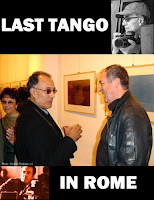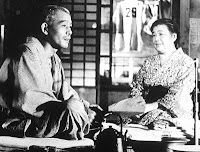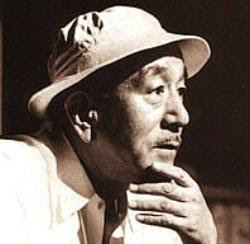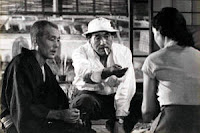Film begins with D.W. Griffith and ends with Abbas Kiarostami
- Jean-Luc Godard

Film by Abbas Kiarostami
Country : Iran , Year : 1999
Run time : 113 minutes , Persian with English sub titles.
6th January 5.45 pm , Ashwin Hospital Auditorium , Ganapathy , Coimbatore
A busy video producer/engineer Behzad from Tehran is sent to a remote Iranian village to capture an obscure burial ceremony. But the 'subject' of his film , Mrs. Malek is ill, not dead, forcing the man and his production crew to slow down, linger in the village, and mingle with the local families.

Along the way, the engineer encounters a radically different lifestyle than his own, with different priorities. In doing so, his perspective on the natural world is changed.
Behzad recites a poem in the film , a poem by Furugh Farrukhzad (1935-67), one of the most extraordinary Persian or Iranian female poets of the twentieth century, which gives the film its title and which treats the central conflict in the film, “life in the face of death.” In Iran, people at all social levels know poetry and quote it to each other constantly, for all sorts of reasons Poetry and Sufism. Both are useful coordinates for anyone trying to get a fix on the intent behind this gorgeous, semi-opaque film, The Wind Will Carry Us
This film is remarkable in its sustained pace, perspective, and ability to focus so sharply on a single character without revealing too much of that character, allowing him to retain a sense of mystery and delightful ambiguity.
In the title sequence of The Wind Will Carry Us absences define presences in numerous ways. In fact, many major characters in the film -- including Mrs. Malek, Youssef, and all three members of Behzad's crew -- are never seen. Most of the sequence unfolds in semidarkness.
The Wind Will Carry Us offers an intricately constructed spatial world that's as breathtakingly beautiful, as various, and as cosmically evocative as a Brueghel landscape -- a world teeming with diverse kinds of life and activity -- and it teases us whenever we want to get to know this world better, seducing and evading us at the same time. If you're open to the possibility that the world is bigger than you typically give it credit for, and you're willing to invest some effort in letting go of your usual way of seeing, this film will be a revelation for you.

Abbas Kiarostami, the Iranian filmmaker who is widely considered one of the world's greatest living directors has written and directed some 41 movies since the early 1970s, and has been compared by critics to such titans of international cinema as Ingmar Bergman and Akira Kurosawa.
In her survey of recent achievements in film, Susan Sontag declared, “Iranian cinema has been the great revelation of the last decade.” Surely one of those largely responsible for this phenomenon is the screenwriter and director Abbas Kiarostami.
Few new films draw
 comparisons to classics like Mr. Bergman's "Wild Strawberries," Michelangelo Antonioni's "Red Desert" or Jean-Luc Godard's "Contempt." Mr. Kiarostami's movies not only evoke such parallels; they also seem to infuse the beleaguered art-film traditions with fresh urgency.
comparisons to classics like Mr. Bergman's "Wild Strawberries," Michelangelo Antonioni's "Red Desert" or Jean-Luc Godard's "Contempt." Mr. Kiarostami's movies not only evoke such parallels; they also seem to infuse the beleaguered art-film traditions with fresh urgency.Born in Tehran in 1940, Kiarostami worked as a commercial artist and children’s book illustrator until he was invited to lead the department of cinema at the Institute for the Intellectual Development of Children and Young Adults. Given this background, it’s not surprising that many of his projects feature children. Kiarostami is a graduate of Tehran University’s Faculty of Fine Arts in Painting
Mr. Kiarostami's own filmmaking began at the end of the 1960's when the loose-knit movement later labeled the Iranian New Wave was just gaining steam. One hallmark of Mr. Kiarostami's work is its esthetic consistency. "Bread and Alley," the first short he made, in 1970, has qualities that distinguish his films up to "Taste of Cherry": a lyrical but concrete feel for the particulars of place and visual atmosphere; a way of eliciting strikingly natural performances from nonactors; and stories in which an anecdotal surface disguises a rich substratum of philosophical, allegorical or social concerns.
Mr. Kiarostami did
 not consider leaving the country during the Iranian revolution of 1978-79, he said, "because of a revolution going on in my own house." His own marriage was failing.
not consider leaving the country during the Iranian revolution of 1978-79, he said, "because of a revolution going on in my own house." His own marriage was failing.Pierre Rissient, an executive with Ciby 2000, the French company that handles worldwide sales of "Taste of Cherry," says that Mr. Kiarostami "proceeds the way the Greek philosophers like Heraclitus do, or Chinese figures like Laotzu, or Japanese Zen poets like Basho -- the poetry is completely linked with philosophy."
Seven of his films are best known to us: Where Is the Friend's Home? (1987), Homework (1989), Close-Up (1990), And Life Goes on... (1991), Through the Olive Trees (1994), Taste of Cherry (1998) and The Wind Will Carry Us (1999).
The protagonists of his films are the ordinary people who surround us. Their lives represent no more and no less of what constitute ours. Their presence in films provides us with an opportunity to think about the everydayness of our existence and relationships; an opportunity to see them as a mirror that reflects the depth of our human feelings and thoughts..
Abbas Kiarostami's films seek to uncover the deepest human emotions in the most ordinary events in life. His works are a demonstration of the significance and relevance of these emotions to the restless, captive, and tormented individuals of the twentieth century.
Everything in Kiarostami's films speaks to the matter at hand. His films direct the spectator toward central human problems. He has deeply-held ideas and feelings. He wants to say certain things about life. So he doesn't waste his time or ours. Nothing has been done merely for effect, to impress the spectator, to enhance the director's reputation. There aren't so many artists like that around, unfortunately. We need more.

















